From the Fine Folks at
https://www.catholicireland.net/saintoftheday/st-fintan-of-clonenagh-6th-century-monk/
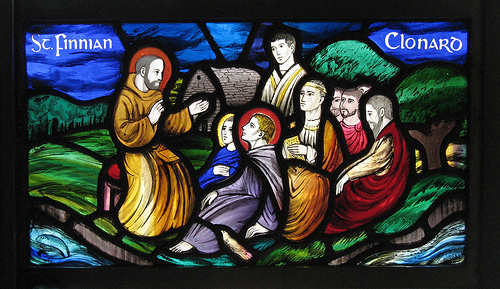 Fionán was an Irish monk who accompanied Aidan from the island Iona of west Scotland to Lindisfarne, an island off north-east England (image). He succeeded him there as abbot. Bede called him “learned and prudent”: he was able to manage the tensions that emerged between the Celtic and Roman ritual expressions of Christianity that were eventually the focal point of the Synod of Whitby (663/4). Patrick Duffy tells his story.
Fionán was an Irish monk who accompanied Aidan from the island Iona of west Scotland to Lindisfarne, an island off north-east England (image). He succeeded him there as abbot. Bede called him “learned and prudent”: he was able to manage the tensions that emerged between the Celtic and Roman ritual expressions of Christianity that were eventually the focal point of the Synod of Whitby (663/4). Patrick Duffy tells his story.
 A monk of Iona and successor of Aidan at Lindisfarne
A monk of Iona and successor of Aidan at Lindisfarne
Fionán was Irish by birth and became a monk of Iona. He probably went with St Aidan to Lindisfarne and became his successor as abbot there in 651. He staunchly upheld Celtic traditions especially as regards the date of Easter.
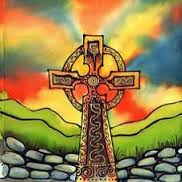 Missionary work among the Angles and East SaxonsFionán carried missionary work south of the Humber, baptising King Peada of the Middle Angles. He sent Cedd and other monks as missionaries to Mercia and the kingdom of the East Saxons.
Missionary work among the Angles and East SaxonsFionán carried missionary work south of the Humber, baptising King Peada of the Middle Angles. He sent Cedd and other monks as missionaries to Mercia and the kingdom of the East Saxons.
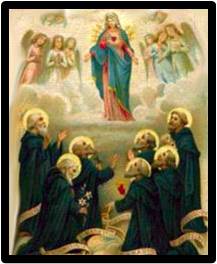 The Servite Order – and Servite Sisters (both OSM) as well as the “Mantellate” – owe their origin to a movement begun in 13th century Florence by seven wealthy merchants. All three groups have a devotion to the Seven Dolours or Sorrows of the Blessed Virgin Mary. Patrick Duffy tells the story of their founders and some other saints associated with them.
The Servite Order – and Servite Sisters (both OSM) as well as the “Mantellate” – owe their origin to a movement begun in 13th century Florence by seven wealthy merchants. All three groups have a devotion to the Seven Dolours or Sorrows of the Blessed Virgin Mary. Patrick Duffy tells the story of their founders and some other saints associated with them.
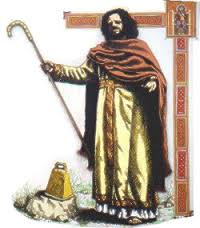 St Fintan’s monastery at Clonenagh had a reputation for austerity, so it is not surprising that St Comgall of Bangor and the founders of the Céilí Dé reform monastic movement had their training here. Patrick Duffy tells what is known about him.
St Fintan’s monastery at Clonenagh had a reputation for austerity, so it is not surprising that St Comgall of Bangor and the founders of the Céilí Dé reform monastic movement had their training here. Patrick Duffy tells what is known about him.
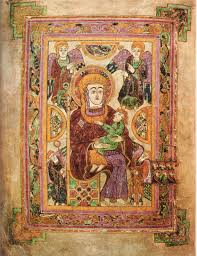
https://www.catholicireland.net/saintoftheday/st-fintan-of-clonenagh-6th-century-monk/
Fionán, abbot of Lindisfarne, was well able to manage the tensions that emerged between the Celtic and Roman ritual expressions of Christianity.
 Fionán was an Irish monk who accompanied Aidan from the island Iona of west Scotland to Lindisfarne, an island off north-east England (image). He succeeded him there as abbot. Bede called him “learned and prudent”: he was able to manage the tensions that emerged between the Celtic and Roman ritual expressions of Christianity that were eventually the focal point of the Synod of Whitby (663/4). Patrick Duffy tells his story.
Fionán was an Irish monk who accompanied Aidan from the island Iona of west Scotland to Lindisfarne, an island off north-east England (image). He succeeded him there as abbot. Bede called him “learned and prudent”: he was able to manage the tensions that emerged between the Celtic and Roman ritual expressions of Christianity that were eventually the focal point of the Synod of Whitby (663/4). Patrick Duffy tells his story. A monk of Iona and successor of Aidan at Lindisfarne
A monk of Iona and successor of Aidan at LindisfarneFionán was Irish by birth and became a monk of Iona. He probably went with St Aidan to Lindisfarne and became his successor as abbot there in 651. He staunchly upheld Celtic traditions especially as regards the date of Easter.
He built a wooden church on Lindisfarne, constructed of oak, with a roof ‘thatched with reeds after the Irish manner’. It seems that Aidan’s other-worldliness had been so great (and perhaps his link with Oswald so strong) that he had not embarked on this task. It must have become increasingly necessary for the monks to have a place of worship of their own during Oswy’s reign, when the Lindisfarne monks no longer had the same close link with the king, and the queen Enfleda and her court followed the Latin Rite.
 Missionary work among the Angles and East SaxonsFionán carried missionary work south of the Humber, baptising King Peada of the Middle Angles. He sent Cedd and other monks as missionaries to Mercia and the kingdom of the East Saxons.
Missionary work among the Angles and East SaxonsFionán carried missionary work south of the Humber, baptising King Peada of the Middle Angles. He sent Cedd and other monks as missionaries to Mercia and the kingdom of the East Saxons.
Tensions between Celtic and Roman ritual expression
During Fionán’s time as abbot the tensions between Celtic and Roman ritual expression begin to emerge. In response to pressure from the queen and her advisers, Fionán agreed to allow Wilfrid, who was one of his monks, to go to Rome and explore contacts with the papacy. These tensions broke out more forcefully after his death.
During Fionán’s time as abbot the tensions between Celtic and Roman ritual expression begin to emerge. In response to pressure from the queen and her advisers, Fionán agreed to allow Wilfrid, who was one of his monks, to go to Rome and explore contacts with the papacy. These tensions broke out more forcefully after his death.
DeathFionán struggled for ten years, supporting his missionaries in their work in the Midlands and East Anglia, and finding his rule at Lindisfarne increasingly threatened. He died before the Synod of Whitby was convened. Possibly the Roman party waited until after his death before embarking on the final confrontation, for he was a doughty opponent.
The Servite Order – and Servite Sisters (both OSM) as well as the “Mantellate” – owe their origin to a movement begun in 13th century Florence by seven wealthy merchants. All three groups have a devotion to the Seven Dolours or Sorrows of the Blessed Virgin Mary. Patrick Duffy tells the story of their founders […]
 The Servite Order – and Servite Sisters (both OSM) as well as the “Mantellate” – owe their origin to a movement begun in 13th century Florence by seven wealthy merchants. All three groups have a devotion to the Seven Dolours or Sorrows of the Blessed Virgin Mary. Patrick Duffy tells the story of their founders and some other saints associated with them.
The Servite Order – and Servite Sisters (both OSM) as well as the “Mantellate” – owe their origin to a movement begun in 13th century Florence by seven wealthy merchants. All three groups have a devotion to the Seven Dolours or Sorrows of the Blessed Virgin Mary. Patrick Duffy tells the story of their founders and some other saints associated with them.
Seven wealthy young merchants In 1233 seven wealthy young merchants of the city of Florence, disenchanted with the worldly life of the city, wanted to live a more radical Christian life. They came together to found a religious society in honor of Mary, the Mother of God and at first were first known as Laudesi, “Praisers”. Later they went to Monte Senario outside the city where they built a hermitage and a church and began to devote themselves to a life together of prayer, penance and poverty.
Servites
Their penitential and communal life attracted others to join them and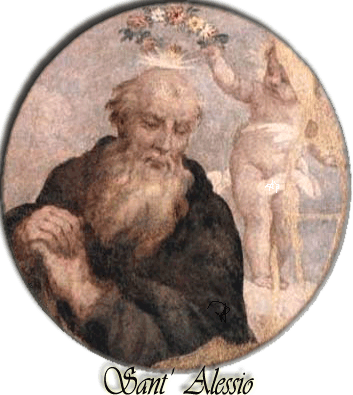 sometime between the years 1240 and 1247 they were approved by the bishop of Florence as a religious Order under the rule of St Augustine. Their first leader was Bonfilius Monaldi. The other six were John Bonaiuncta, Manettus dell’Antella, Amadeus degli Amidei, Hugh Uguccione, Sosthenes Sostegno and Alexis Falconieri. They came to be known as the “Friar Servants or Servites of Mary” and made other foundations at Carfaggio outside Florence, Siena, Pistoia, Arezzo and Lucca but their most famous church is the Annunziata in Florence founded in 1250, and still today in their hands.
sometime between the years 1240 and 1247 they were approved by the bishop of Florence as a religious Order under the rule of St Augustine. Their first leader was Bonfilius Monaldi. The other six were John Bonaiuncta, Manettus dell’Antella, Amadeus degli Amidei, Hugh Uguccione, Sosthenes Sostegno and Alexis Falconieri. They came to be known as the “Friar Servants or Servites of Mary” and made other foundations at Carfaggio outside Florence, Siena, Pistoia, Arezzo and Lucca but their most famous church is the Annunziata in Florence founded in 1250, and still today in their hands.
Their penitential and communal life attracted others to join them and
 sometime between the years 1240 and 1247 they were approved by the bishop of Florence as a religious Order under the rule of St Augustine. Their first leader was Bonfilius Monaldi. The other six were John Bonaiuncta, Manettus dell’Antella, Amadeus degli Amidei, Hugh Uguccione, Sosthenes Sostegno and Alexis Falconieri. They came to be known as the “Friar Servants or Servites of Mary” and made other foundations at Carfaggio outside Florence, Siena, Pistoia, Arezzo and Lucca but their most famous church is the Annunziata in Florence founded in 1250, and still today in their hands.
sometime between the years 1240 and 1247 they were approved by the bishop of Florence as a religious Order under the rule of St Augustine. Their first leader was Bonfilius Monaldi. The other six were John Bonaiuncta, Manettus dell’Antella, Amadeus degli Amidei, Hugh Uguccione, Sosthenes Sostegno and Alexis Falconieri. They came to be known as the “Friar Servants or Servites of Mary” and made other foundations at Carfaggio outside Florence, Siena, Pistoia, Arezzo and Lucca but their most famous church is the Annunziata in Florence founded in 1250, and still today in their hands.
SpreadBy 1260 the order was divided into two provinces, Tuscany and Umbria, with Manettus directing that of Tuscany and Sosthenes that of Umbria. Within five years two more provinces were added, Romagna and Lombardy. For a while around the time of the Second Council of Lyons 1274 the order was suppressed, but eventually in 1304 Pope Benedict IX gave it definitive approval. Six of its members were ordained priests. Alexis Falconieri remained a lay brother; he outlived all the others and was the only one alive when the order received papal approval. He died in 1310.
Pope Leo XIII canonised the seven Servite founders in 1888.
Other Servite saints
Three other saints of this order are worthy of mention: The first is St. Philip Benizi (1233-85) who had doctorates in medicine and philosophy before he joined the order and was was elected general in 1267. He codified the rules and constitutions, defended the order when it was under threat of suppression and sent the first Servite missionaries to the land of the Tartars. In 1279 at the request of Pope Nicholas III, he was also successful in bringing peace between the Guelphs and the Ghibellines.
Three other saints of this order are worthy of mention: The first is St. Philip Benizi (1233-85) who had doctorates in medicine and philosophy before he joined the order and was was elected general in 1267. He codified the rules and constitutions, defended the order when it was under threat of suppression and sent the first Servite missionaries to the land of the Tartars. In 1279 at the request of Pope Nicholas III, he was also successful in bringing peace between the Guelphs and the Ghibellines.
The second is St Peregrine Laziosi (1265-1345). Born in Forli, he was an active supporter of the Ghibelline (anti-papal) party when Philip Benizi visited the city. He heckled and struck Philip, who literally turned the other cheek. This caused Peregrine to repent and join the Servites at Siena in 1292. He returned to Forli where he founded a new friary and devoted himself to working for the sick and the poor. His humility and patience were so great that he was called by his people a second Job. He also imposed a penance on himself of standing when it was not necessary to sit. This led to his contracting varicose veins which turned cancerous and were so bad that a doctor was about to amputate his leg. The night before the surgery Peregrine prayed before the image of the crucified Christ and when he awoke next morning he was completely healed. He died in 1345 aged 80 and his incorrupt body rests in the Servite Church in Forli. His feast day is 4th May.
A third saint associated with the Servites is St Juliana Falconieri (1270-1341), the niece of Alexis mentioned above. She founded a female branch of the Servites called the Mantallate. See 16th June.
St Fintan’s monastery at Clonenagh had a reputation for austerity, so it is not surprising that St Comgall of Bangor and the founders of the Céilí Dé reform monastic movement had their training here. Patrick Duffy tells what is known about him. Two Fintans There are at least two Fintans among the Irish saints – […]
 St Fintan’s monastery at Clonenagh had a reputation for austerity, so it is not surprising that St Comgall of Bangor and the founders of the Céilí Dé reform monastic movement had their training here. Patrick Duffy tells what is known about him.
St Fintan’s monastery at Clonenagh had a reputation for austerity, so it is not surprising that St Comgall of Bangor and the founders of the Céilí Dé reform monastic movement had their training here. Patrick Duffy tells what is known about him.
Two Fintans
There are at least two Fintans among the Irish saints – St Fintan of Clonenagh, Co Laois, and St Fintan of Taghmon, Co Wexford. A third is associated with Doon in Co Limerick.
There are at least two Fintans among the Irish saints – St Fintan of Clonenagh, Co Laois, and St Fintan of Taghmon, Co Wexford. A third is associated with Doon in Co Limerick.
Formation at Terryglass
Our Fintan was educated by St Colum of Terryglass, Co Tipperary, the severity of whose Rule and penitential practices so influenced Fintan that his own foundation in Clonenagh, Co. Laois, also acquired a reputation for austerity.
Our Fintan was educated by St Colum of Terryglass, Co Tipperary, the severity of whose Rule and penitential practices so influenced Fintan that his own foundation in Clonenagh, Co. Laois, also acquired a reputation for austerity.
Bread of woody barley
According to Oengus, Fintan himself lived on “bread of woody barley and clayey water of clay”. The community did not have even one cow and so they had neither milk nor butter. The monks complained they couldn’t do hard work on such a meagre diet. A deputation of local clergy headed by Canice of Aghaboe came to urge him to improve it. He agreed for his monks, but he elected to keep to the strict diet himself.
According to Oengus, Fintan himself lived on “bread of woody barley and clayey water of clay”. The community did not have even one cow and so they had neither milk nor butter. The monks complained they couldn’t do hard work on such a meagre diet. A deputation of local clergy headed by Canice of Aghaboe came to urge him to improve it. He agreed for his monks, but he elected to keep to the strict diet himself.
Another version says that, warned by an angel, he prepared a great feast for the deputation with plenty available as long as they stayed, but when they went away, all reverted to as it was before. In spite of the hardships, or maybe even because of them, the monastery was crowded with young monks from all over Ireland.
Followers

Saint Oengus the Martyrologist on the Nativity of Christ
Among those trained by Fintan at Clonenagh was St Comgall, who founded his own monastery at Bangor, where he trained Columbanus and a host of others who brought monasticism to Europe. Oengus, an associate of St Maelruain of Tallaght as leaders the Céilí Dé reform movement, was born, educated by Fintan, lived and died at Clonenagh.
The pact of the two FintansThe Martyrology of Oengus tells that Fintan of Taghmon, who was also called Munnu, and Fintan of Clonenagh formed an oentas(or pact) that the name of each of them would be given to the other, in commemorationem societatis. Munnu was the baptismal name of the man from Taghmon. He took on the name Fintan, while Fintan of Clonenagh took Munnu or Munda as a second name. Not surprisingly this led to some confusion.
The Book of ClonenaghThe Book of Clonenagh is one of the lost sources cited by Geoffrey Keating in his Foras Feasa ar Éirinn (The History of Ireland) for information about the setting up of the dioceses of Ireland at the Synod of Rath Breasail in the year 1111.
For St Munna / Fintan of Taghmon, and another perspective see http://homepage.eircom.net/~taghmon/histsoc/vol2/8munnac/8munnac.htm
Whiskey and The Surfer iTunes
https://itunes.apple.com/us/
http://www.patreon.com/
My first book, “Death by AutoPilot” out NOW!
https://www.amazon.com/Death-
My Latest Album “Whatever it is you do all Day”
https://itunes.apple.com/us/
Pitboss 2000 iTunes, Spotify and Everywhere
https://itunes.apple.com/us/
PC Deathsquad iTunes, Spotify and Everywhere
https://itunes.apple.com/us/
http://www.
http://www.twitter.com/
http://www.instagram.com/
http://www.facebook.com/
http://www.facebook.com/
http://www.facebook.com/
http://www.facebook.com/
https://itunes.apple.com/us/
http://www.patreon.com/
My first book, “Death by AutoPilot” out NOW!
https://www.amazon.com/Death-
My Latest Album “Whatever it is you do all Day”
https://itunes.apple.com/us/
Pitboss 2000 iTunes, Spotify and Everywhere
https://itunes.apple.com/us/
PC Deathsquad iTunes, Spotify and Everywhere
https://itunes.apple.com/us/
http://www.
http://www.twitter.com/
http://www.instagram.com/
http://www.facebook.com/
http://www.facebook.com/
http://www.facebook.com/
http://www.facebook.com/
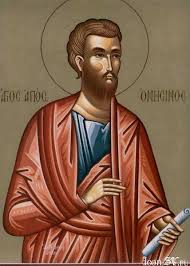
 pire. They often had the freedom of the house and they ate and slept well, but they remained slaves, and freedom was not theirs to cherish. In their hearts, they yearned for the land from which they had been snatched by the marauding armies of the Roman Empire.
pire. They often had the freedom of the house and they ate and slept well, but they remained slaves, and freedom was not theirs to cherish. In their hearts, they yearned for the land from which they had been snatched by the marauding armies of the Roman Empire.
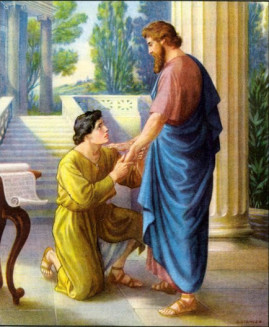 Paul helped Onesimus to see that life was to be lived in its fullness in the present moment, without a constant longing to be elsewhere, somehow freed from the ‘burden’ of the present moment. To use the phrase of a later French spiritual writer, Jean Pierre de Caussade (1675-1751), the matrix in which we surrender ourselves to God’s will is ‘the sacrament of the present moment’.
Paul helped Onesimus to see that life was to be lived in its fullness in the present moment, without a constant longing to be elsewhere, somehow freed from the ‘burden’ of the present moment. To use the phrase of a later French spiritual writer, Jean Pierre de Caussade (1675-1751), the matrix in which we surrender ourselves to God’s will is ‘the sacrament of the present moment’. 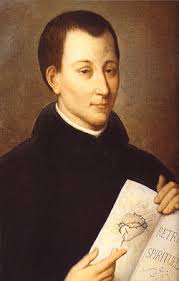
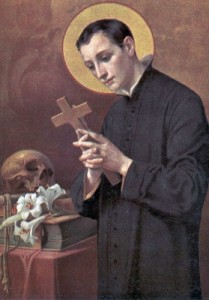
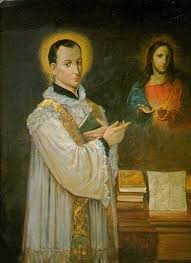
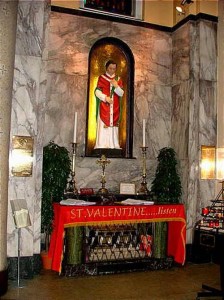
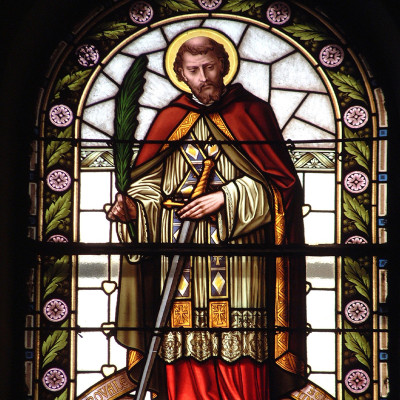
 Although in ancient Rome the lives of young boys and girls were strictly separate, one of the customs associated with the eve of the festival of Lupercalia was name drawing: the names of Roman girls were written on slips of paper and placed into jars. Each young man would draw a girl’s name from the jar and they would then be partners for the duration of the festival. Sometimes the pairing of the children lasted an entire year, and often, they would fall in love and would later marry.
Although in ancient Rome the lives of young boys and girls were strictly separate, one of the customs associated with the eve of the festival of Lupercalia was name drawing: the names of Roman girls were written on slips of paper and placed into jars. Each young man would draw a girl’s name from the jar and they would then be partners for the duration of the festival. Sometimes the pairing of the children lasted an entire year, and often, they would fall in love and would later marry.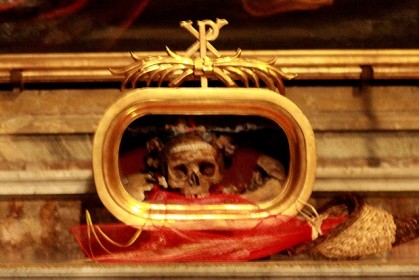
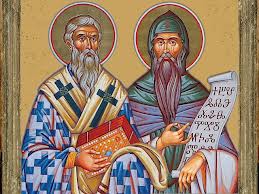
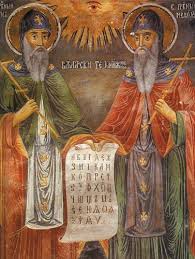
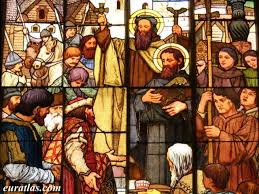

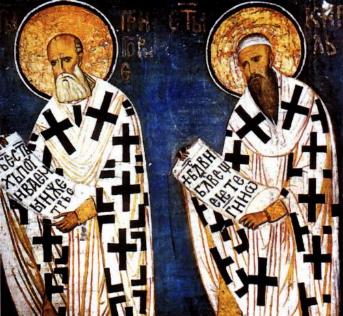
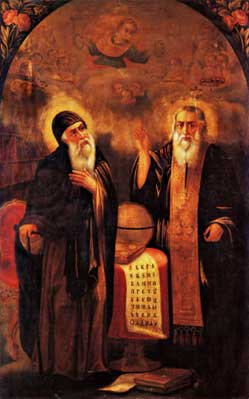 Fr John Murray PP
Fr John Murray PP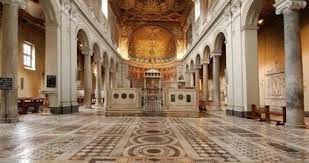
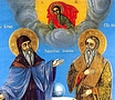 Pope John Paul II concluded his encyclical with a beautiful prayer: ‘Great God, One in Trinity, I entrust to you the heritage of the faith of the Slav nations. Preserve and bless this work of yours! Grant to the whole of Europe, O most Holy Trinity – through the intercession of the two holy brothers – to feel the need for religious and Christian unity and for a communion of all its peoples. The Pope of Slav origin thanks you for calling the Slav nations into the communion of the faith. May it never fail!’
Pope John Paul II concluded his encyclical with a beautiful prayer: ‘Great God, One in Trinity, I entrust to you the heritage of the faith of the Slav nations. Preserve and bless this work of yours! Grant to the whole of Europe, O most Holy Trinity – through the intercession of the two holy brothers – to feel the need for religious and Christian unity and for a communion of all its peoples. The Pope of Slav origin thanks you for calling the Slav nations into the communion of the faith. May it never fail!’